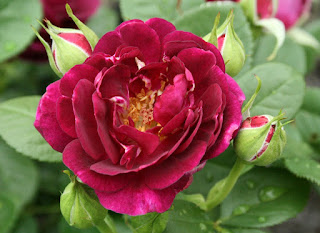Bulbs planted in spring will produce some of the most dramatic colors in your summer and fall garden. You can tuck these bulbs among your perennials to create a fuller looking bed or create a special summer bulb garden of your own. Many summer and fall blooming bulbs are ideal in containers and will liven up your porch or deck. Dahlias, gladiolus, begonias, cannas and a broad selection of lilium, including Asiatic and Oriental lilies are available now.
Lilies are a great choice for your perennial garden. There are many varieties of lilium to choose from and they are semi-hardy to hardy in our planting zone, meaning they will typically come back season after season. If you planted some lilies last year, you may see them poking through the ground already. Once they are established in your garden, they'll produce showy blooms for many years.
Asiatic lilies are popular because they tend to spread quickly. Other varieties won't spread as rapidly as Asiatic lilies, but they tend to be more fragrant. Lilies are planted from bulbs. Before planting, amend the soil with organic material, add some Bone Meal or Dutch Bulb Food and plant the bulbs 5" to 6" deep.
Canna lilies feature attractive green, bronze or variegated foliage, in addition to their flowers. Cannas do well in garden beds and containers. The canna “bulb” is called a rhizome. Plant cannas about 6" deep and about 18" apart, in well-amended soil, with Bone Meal added to the planting site.
Of all the summer bulbs, Dahlias offer the greatest variety including dinnerplate, decorative, cactus, and powder puff. Dahlias are grown from tubers and come in a wide variety of colors.
Plant dahlias only as deep as the crown, in well-amended soil. Dahlias will bring a wide range of color and texture to your garden in late summer and early fall.
For more late summer and fall color, plant Gladiolus. Gladiolus “bulbs” are called corms. Plant your corms about 3" deep and 4" to 5" apart, in soil that has been amended with compost.
Tuberous begonias make incredible displays of color in a shady spot on your patio. They can be planted in containers, hanging baskets and directly in the garden.
Except for the lilium, bulbs planted now are considered tender and will not survive our winter weather. They need to be dug and stored if you want to save them for next year.
Summer bulbs tend to sell out early, so it’s best to shop now to get the best selection.













.JPG)
%2022.JPG)





